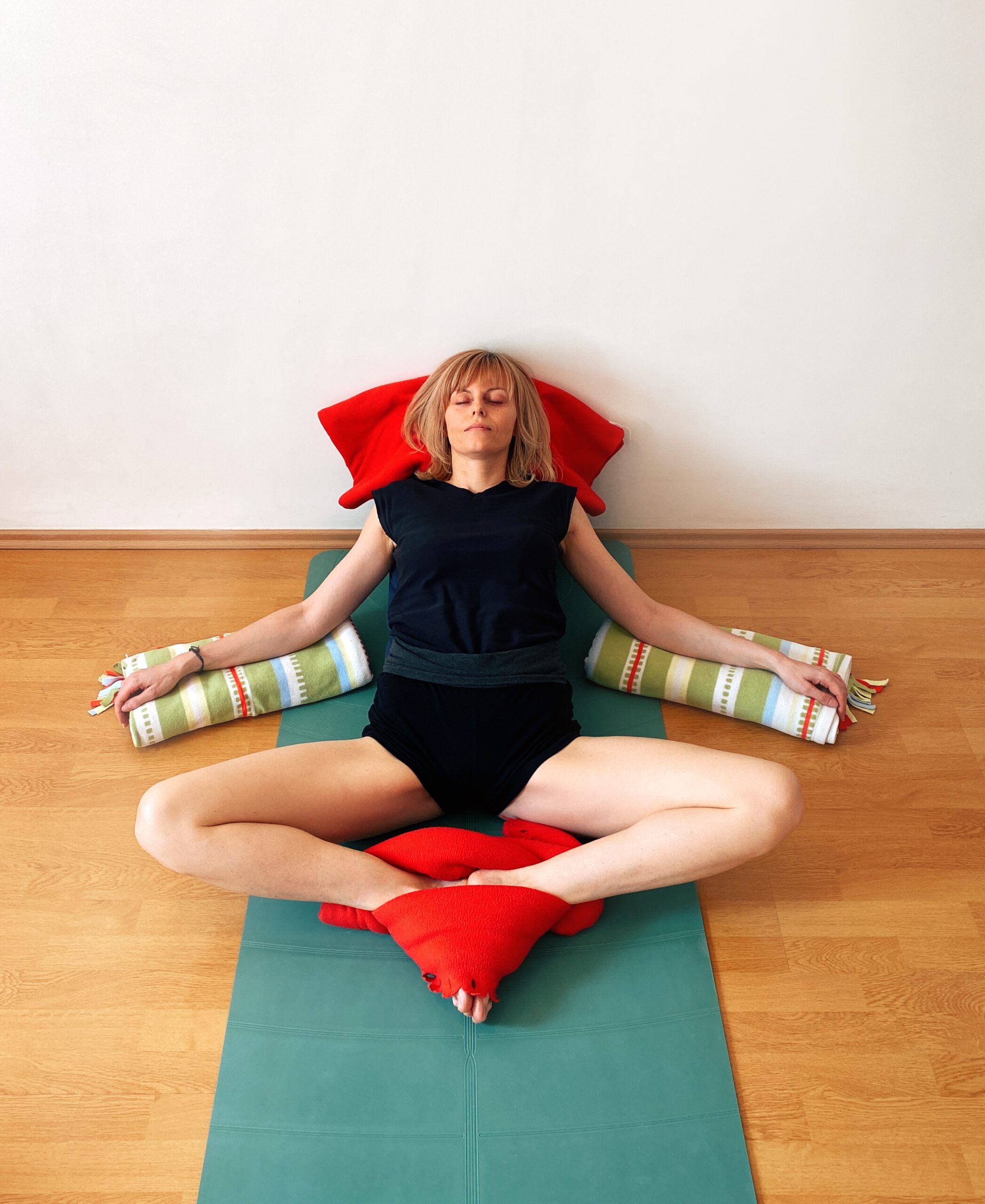animal moves

Animal moves (or yin and yang) yoga is an art based on the Chinese healing practices originated 5000 years ago and then influenced by Indian yogis around 2000 years ago.
It combines active yoga poses, passive yoga poses, chi kung movement exercises, visualisations and breathing meditations.
Main benefits are:
- clearing energetic blockages in the body, which improves circulation
- significant improvement in the range of motion
- increased core strength, stamina and balance
- enhanced vitality, health and self awareness
- releasing tension and calming down the mind.
Typical yin and yang yoga class starts with an earth element meditation, which is then followed by a flow of animal and element based postures. There are no rules regarding alignment or time of keeping the poses.
The target is to feel the energy of the animal and/or the element of the pose, stop overthinking and to be playful.
The range of animals portrayed during the practice is very wide – it can be anything between a fly and a t-rex :).
Animal moves method is great for seniors and people with limited mobility, because it works through the gentle movement that settles them in the pose rather than through long lasting or heavy effort.
It is also a fun way for kids (even if it is only your internal kid) to start the journey with yoga. While doing animal based postures, we feel more like we are just playing around and not doing serious work. Which is helpful if we want to stay motivated and not discouraged by too demanding, serious practice.
Restorative yoga is a perfect choice for people that live in a ‘bigger-better- faster-more’ environment and need to slow down.
It’s also a good way to start a yoga experience for those who say ‘I would like to do yoga but I will never be able to bend like that’.
Relax.
Restorative yoga is slow and grounded, and you are fully supported by bolsters, blankets, blocks, chairs or walls. Thanks to this support, your body can gradually open in a passive way and switch from ‘fight or flight’ to ‘rest and digest’ mode.
General benefits are:
- deep relaxation
- healing on the cellular level
- relieving insomnia and anxiety
- improving flexibility without strain on muscles and ligaments
- improving digestion.
Surprisingly, in case of people living under constant stress, ‘no movement’ yoga can even support weight loss, as it provides the body with additional relaxed time that is necessary for the digestion process.
Majority of restorative yoga poses may be groupped in the following families: forward folds, backbends, twists, prone poses, inversions.
Each family has its own specific benefits, and these are listed in a short guide below.
You may use it to support yourself with home practice, between studio classes.
Forward folds – calm down the mind, cool the body, soothe the nervous system, relieve anxiety, encourage introspection, stretch the back side of the body, increase circulation in the pelvic area and help to relieve menstrual pain.
Backbends – energise, invigorate, open the mind to new possibilities, relieve restlessness, stretch the front side of the body, help to open the chest area and release the tension held there, alleviate chronic back and neck pain.
Twists – release the stuck energy, refresh and energise, neutralise the spine, detoxify, improve digestion and increase metabolism.
Prone poses (lying on your belly, often combined with hip openers) – provide emotional release, reduce stress, fatigue and anxiety, help to easily fall asleep.
Inversions – increase immunity, improve circulation in the body, relax and restore body energy.
Magdalena’s classes in this week



